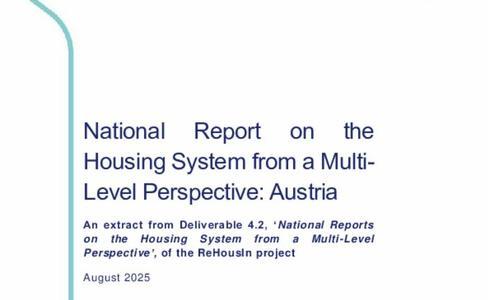National report on the housing system from a multi-level perspective: Austria
An extract from Deliverable 4.2 “National reports on the housing system from a multi-level perspective”
Austria’s housing system is shaped by a stable institutional framework marked by persistent political divergence across governance levels. The main policy instruments – limited-profit housing regulation, tenancy law, and housing subsidies – remain intact, yet their use is politically contingent. Housing policy change occurs rather through shifts in how policy instruments are mobilised by different regions, parties and coalitions. Recent decades have seen re-commodification trends, especially in the private rental sector.
At the same time, decommodified housing through limited-profit housing associations and publicly supported through subsidies, land banking, and zoning instruments, has been expanded. This has led to a segmented housing system increasingly determined by local political leadership and land policy capacity. The interaction between Austria’s housing and environmental policy goals reveals tenure-specific tensions. Retrofitting policies tend to favour owner-occupied singlefamily homes, while rental housing – especially private and condominium stock – faces legal barriers and cost pass-through. Nature-based solutions (NBS) show very limited tensions in social housing due to rent regulation, but capacities for NBS implementation are unevenly distributed.

Publication date:
Languages: English